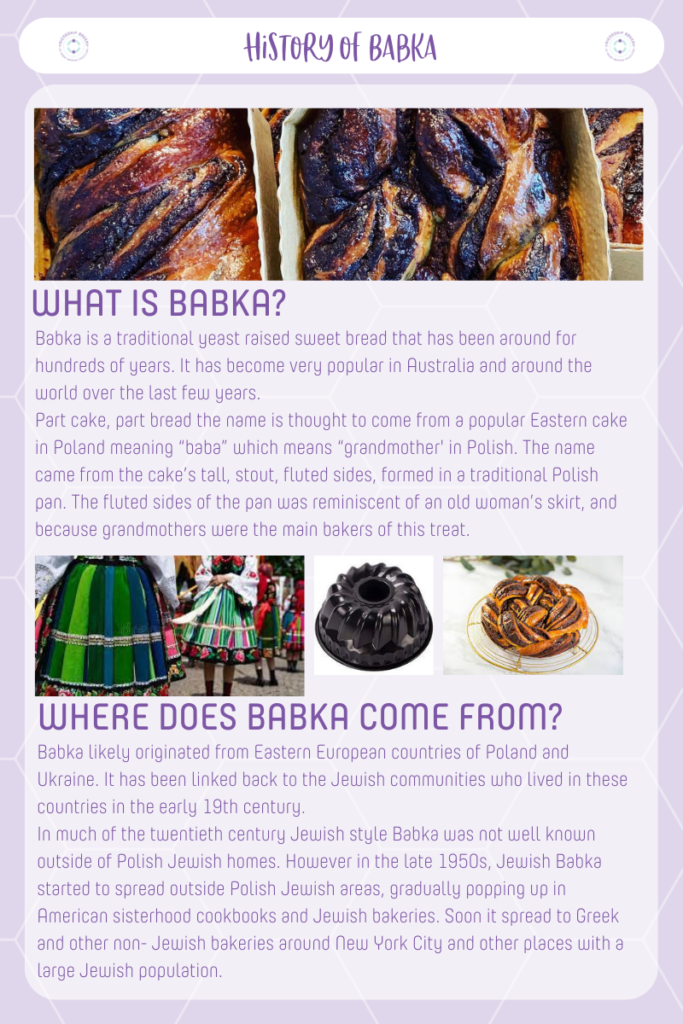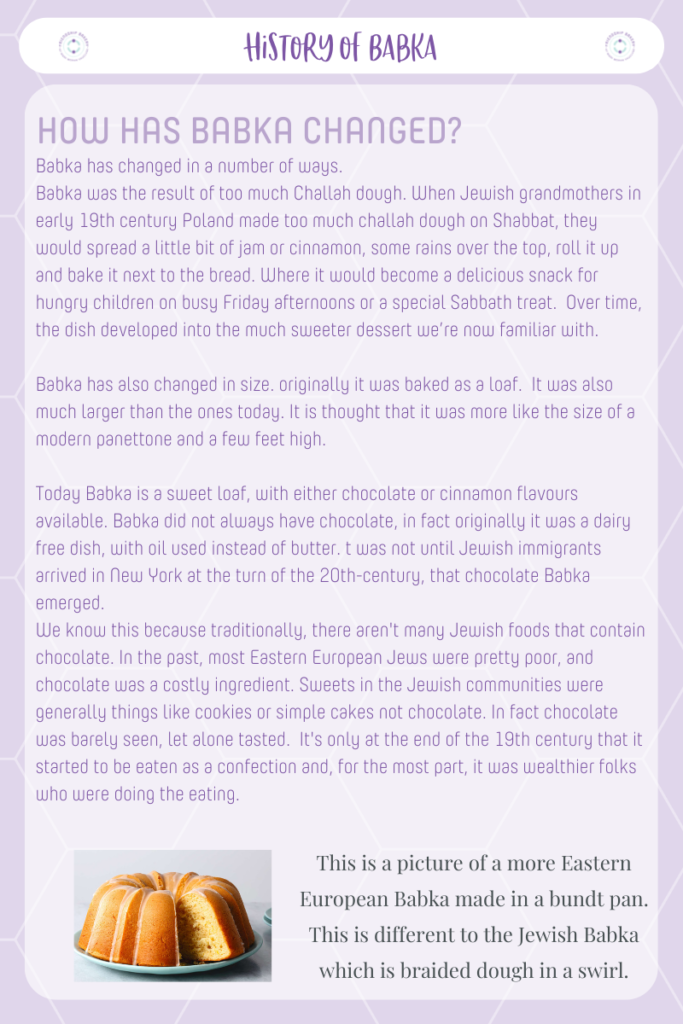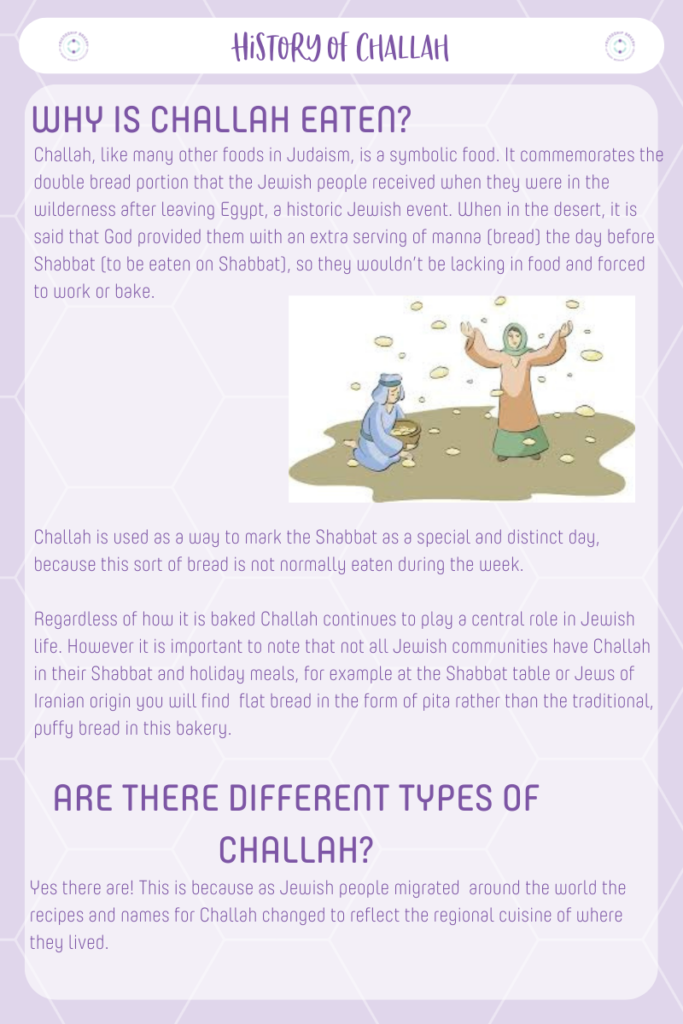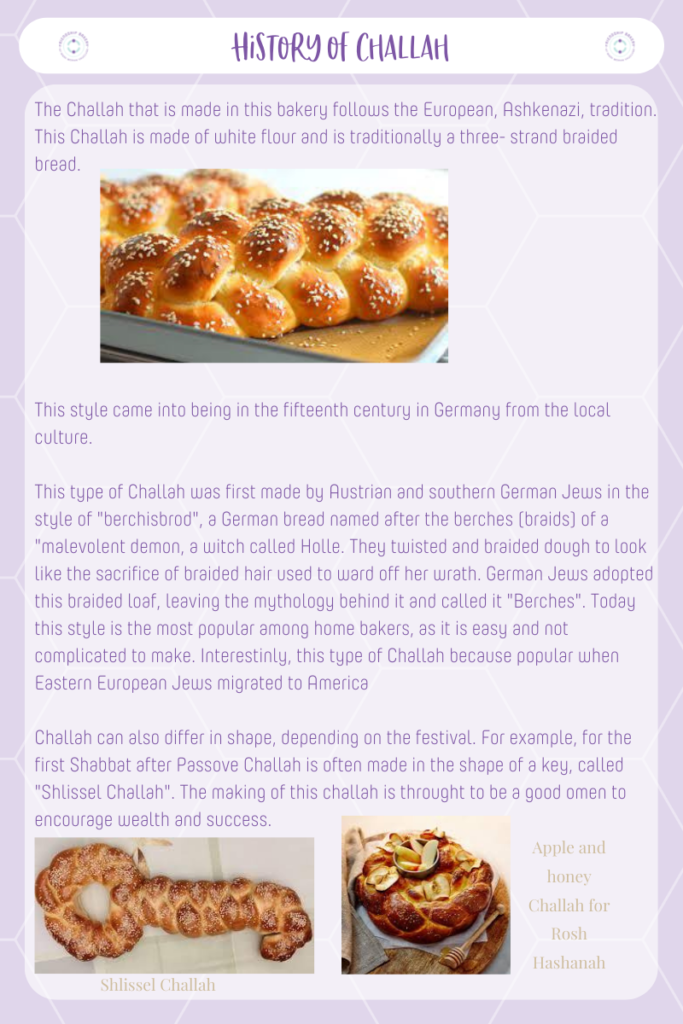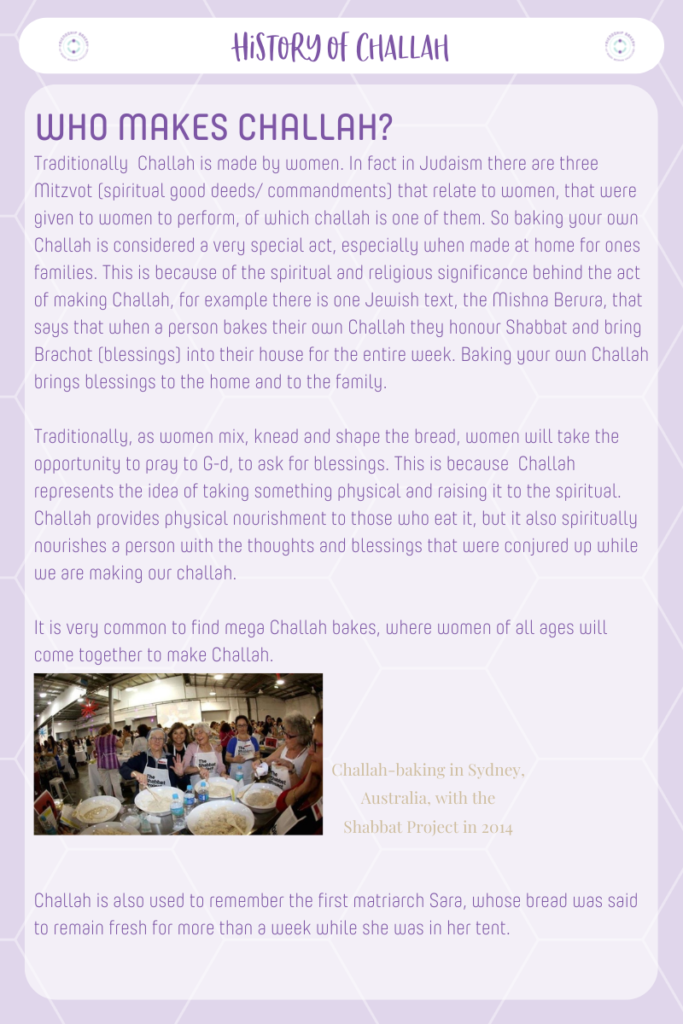My Public History Project is a mix between a fact sheet on the traditional (mainly European) Jewish foods of Challah and Babkah. I researched the history of these foods, explaining where they came from, why they are eaten, when they are eaten, who makes them and how different versions of that food have emerged and evolved over time. This came about after volunteering at the Friendship Circle Bakery.
I decided to do this as my original project for a number of reasons. The first is that my original project idea did not go to plan. In a way this was positive because I have always wanted to research these food topics, I have always been interested in the history of these foods and what stories they tell. I realised that I finally had the time and space to do this. As a modern Australian Jewish woman I have always been interested in what ‘Jewish food’ tells me about my history, my religion and what life was like for Jewish people who lived before me. I believe that it is important that these things are known, they must not be forgotten because they are interesting histories.
When I was making accessible recipe cards for the Friendship Circle Bakery, where I did my volunteering, I came to the realisation that these foods are special. I remember asking someone at the bakery if they knew where Babka originated and they did not know. This made me realise that many people eat these foods without knowing why they are eaten and I believe that it is important that this is known. I argue that it is important that people know this history. The bakery already has a very special mission and purpose and I wanted to add to it with these cards.
I hope that both shoppers and participants at the Friendship Circle bakery will benefit from my project. Not everyone who works in the bakery or buys products from it knows the history of these foods. These information cards will serve to inform people of why they are making the food and the importance of them.
The final form of these fact sheets are still to be decided, as I want to make them as accessible as possible and I am not quite sure how to do that. It needs to be accessible because people of all ages and abilities interact with the bakery. However, so far the information is presented on an A4 page in colour.
The argument of my project is two fold. First I am arguing that food traditions are important, that they tell stories and histories, which is why consumers of these food items should be aware of these histories. They tell stories of past ways of living and food habits. For example looking at the origins of Babka one learns that it was made with the leftover challah dough that was made for the Sabbath, the leftover dough would be braided and fruit and nut- filled scraps added. From this we learn that waste was avoided, that any leftover was turned into something else.
The second argument I am making is that food tells stories of migration. When looking at the history of babka one sees how the recipe changed when Jewish bakers started making it in America, adding in chocolate and cinnamon.
There were a number of themes that emerged through the fact sheet. The first is that food is history in the Jewish tradition. Often in Judaism foods are eaten for a certain reason, for example Challah is eaten on the Sabbath and religious holidays like Jewish New Year. I wanted to show this. Often when we study history we tend to learn history through primary and secondary written sources, however I am arguing that food is as valuable as a source because when you sit down and look at the origin of the foods, for example Challah and Babka, you can a lot learn about Jewish history; patterns of migrant, values, historical events. In providing these details I showed how one can gain a deep understanding of Jewish culture by looking at the history of these foods.
I always wanted to show a bit of Jewish history itself. I believe that too often Jewish history is taught through very specific historical moments and through specific lenses. By mentioning how the recipes have changed over the years, I tried to show different parts of Jewish history that people may not know about. For example, some people do not know that there was a rich and thriving Jewish community in India. Often in Jewish communities and even worldwide, the concept of a Jewish person is seen through a very single lens, a Jewish person is understood as being someone who is white, however there are Jewish people from all over the world e.g. there are Indian, Iranian and Yemenite Jews. I wanted to show this and try to bring awareness to the whitewashing and erasure that happens to these communities. I wanted to show that their traditions are not given equal footing and we risk losing key Jewish communities and traditions if this is continued.
Another theme I wanted to show is that food and the history of food is an under utilised way to teach about Judaism and religion in general. Often people are given very specific ways in which they can connect to religion, they are told that there are certain paths, but I am trying to show that food is as legitimate as any other way to connect to religion.
I also wanted to show how food can become an intergenerational point of connection. One only needs to look at the entries in the Monday Morning Cookbook to see this. For many of the authors who submitted recipes, the food items they wrote about reminded them of their grandparents. So when they made the recipes they were reminded of how their grandparents would make the food.
In Judaism, losing a tradition is not easy and I wanted to show this in my assignment. It is important to show this because the idea of a tradition is an important part of Jewish culture and the religion itself. A lot of the religion and cultural practices in Judaism are based on traditions that have been around for many years. To properly understand these food items and why they are so important to some Jewish communities, one needs to understand that concept.
I also wanted to show how Judaism has evolved as a religion over the centuries. One way this is seen is through looking at how the recipes and foods have adapted in different cultures and time periods. This can be seen in Babka and how it changed when European migrants came to Europe.
